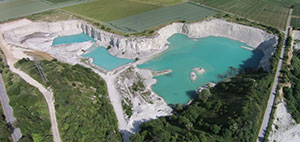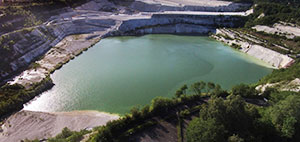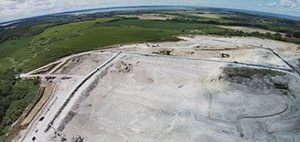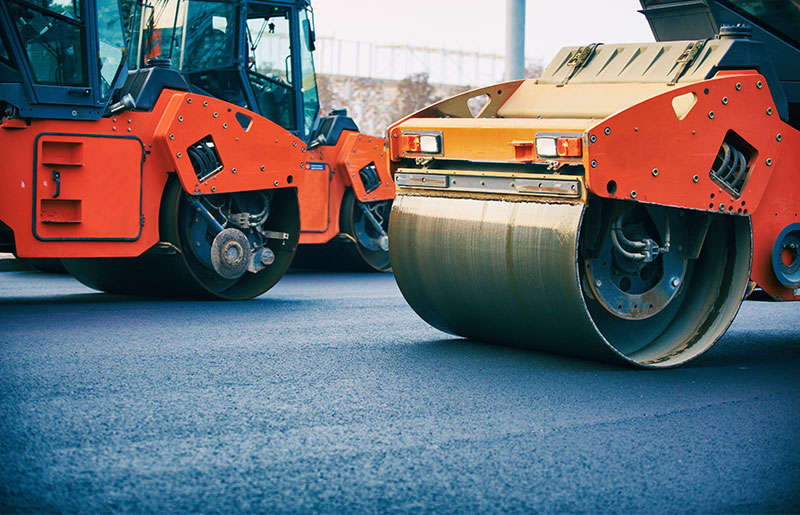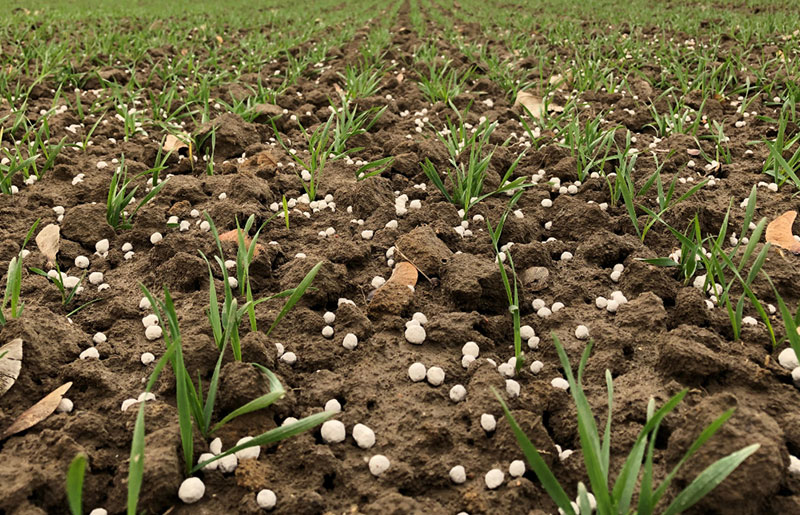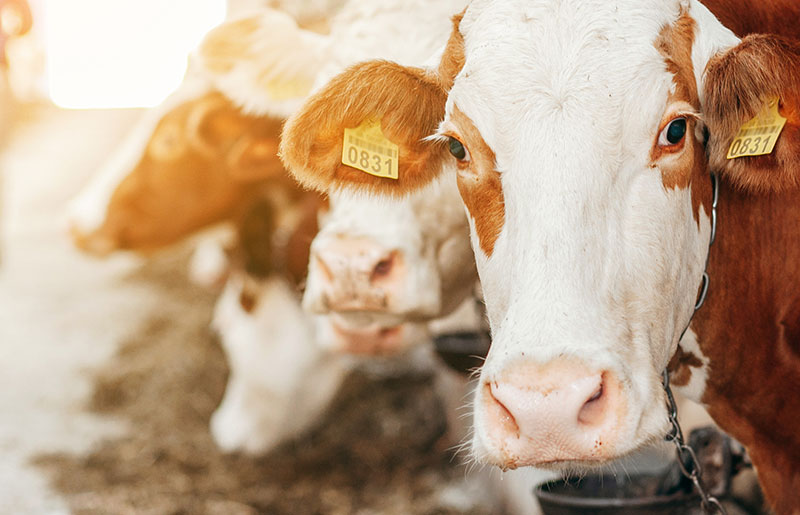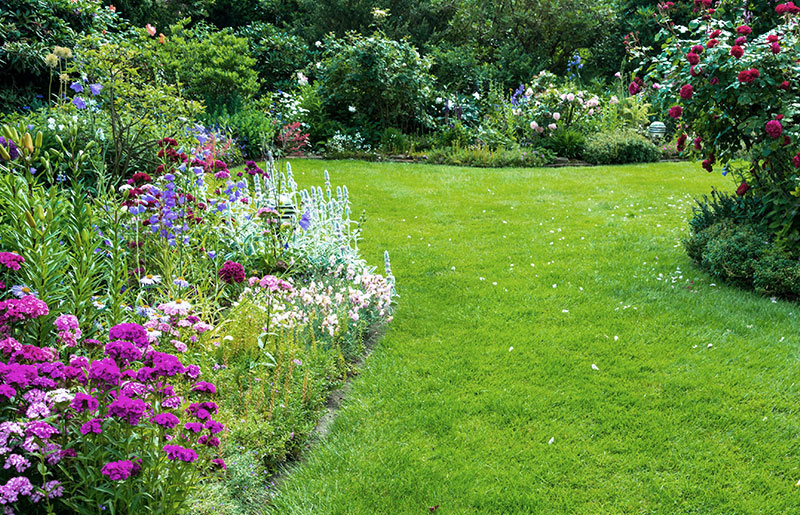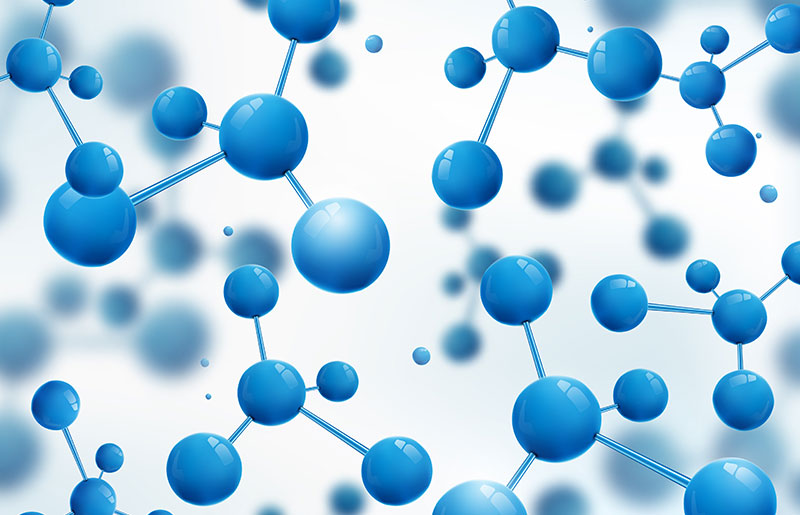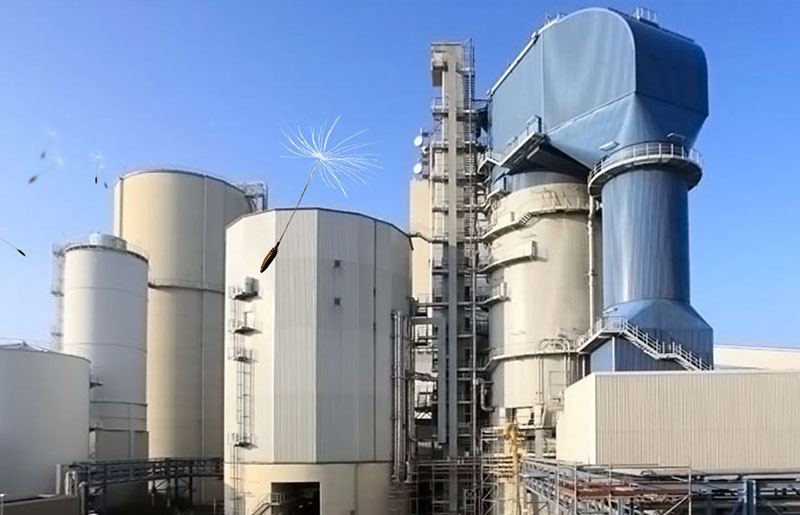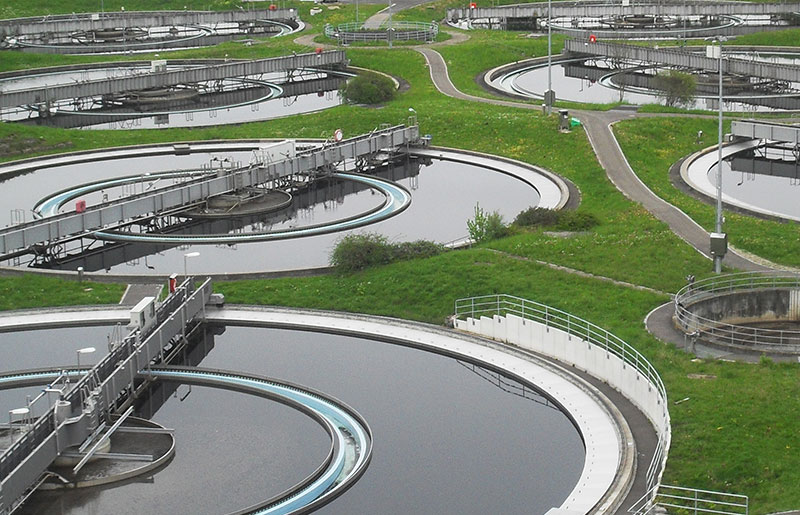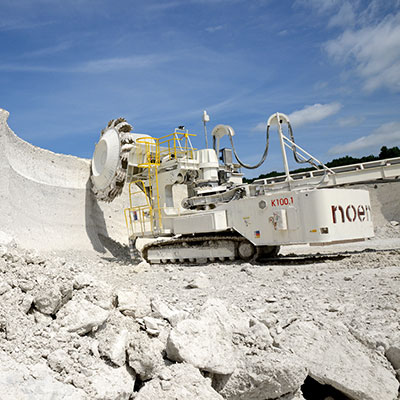
What is Chalk?
About 70 to 100 million years ago, during the time of the dinosaurs, the origin of our chalk deposits, consisting of Calcium carbonate (CaCO3), was formed.
At that time, large parts of present-day Europe were covered by the sea. In the coastal shallow waters, significant deposits formed from shells and skeletons of small organisms. These sediments retained their relatively soft structure, resulting in a natural resource with numerous applications.
Thanks to its amorphous structure and extremely fine consistency, chalk is easy to distribute. This makes it an ideal filler in the industrial sector.
Besides its industrial use, the highly reactive Calcium carbonate in chalk is particularly suitable as agricultural lime in farming and forestry. Also, for animal nutrition, Calcium carbonate from chalk serves as an excellent supplier due to its high calcium content.
Another application area for highly reactive chalk is flue gas desulfurization, where it makes a valuable contribution to environmental protection.
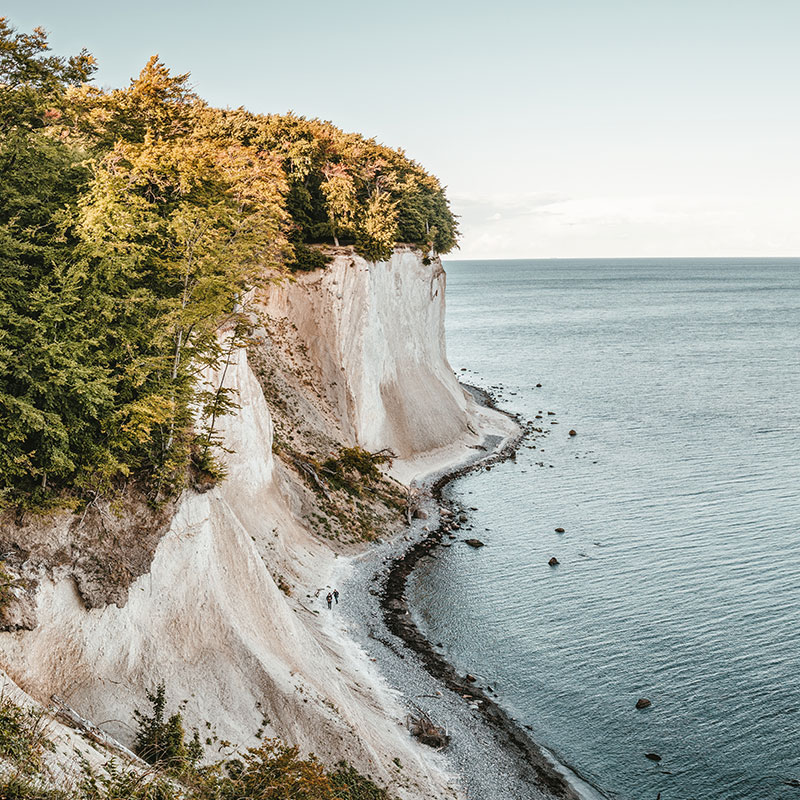
Particularly Fine Porosity
Tiny algae in the sea create small calcite plates to protect themselves, and after their death, they sink to the ocean floor. There, they form chalk slurry, which, under the pressure of the water above it, compresses into porous, crumbly chalk rock. It is estimated that the deposition of one centimeter of sediment took about 1000 years.
Today, these shell-forming marine algae are known as coccolithophores or calcareous algae and have a skeleton composed of numerous disc-shaped and radially arranged calcite plates. These tiny plates give chalk its unique fine porosity and absorbency.
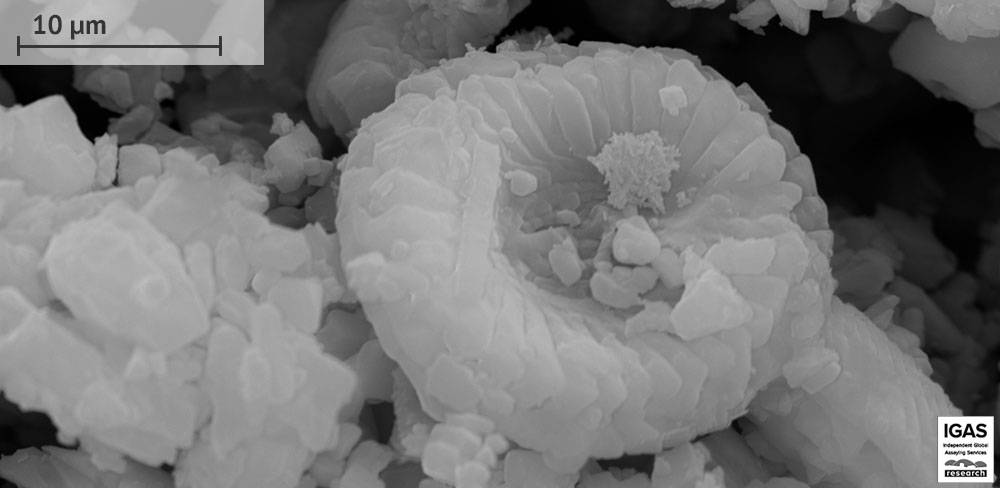
SEM Image of Chalk Lime - IGAS research Goslar
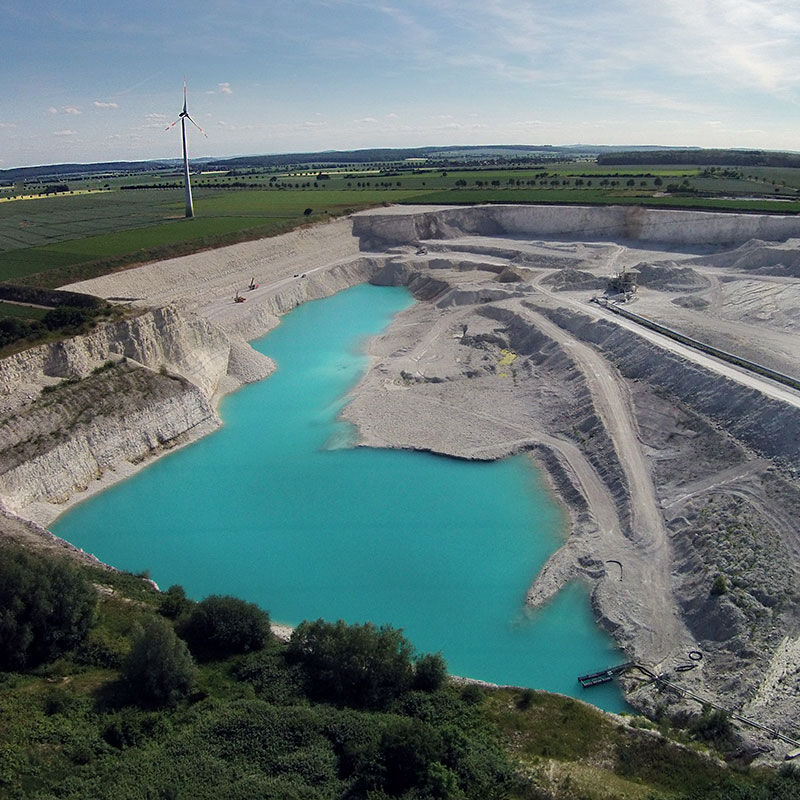
Lower Hardness, High Capillary Action, and Special Absorbency
Our chalk differs from other limestones such as Devonian or Jurassic limestone due to its lower hardness.
The particles are softer and can be easily scratched with a fingernail. About 40 percent of the total volume consists of pores of approximately 0.5 micrometers, leading to high porosity. This results in a significantly larger internal surface area, which can reach up to 5 square meters per cubic centimeter!
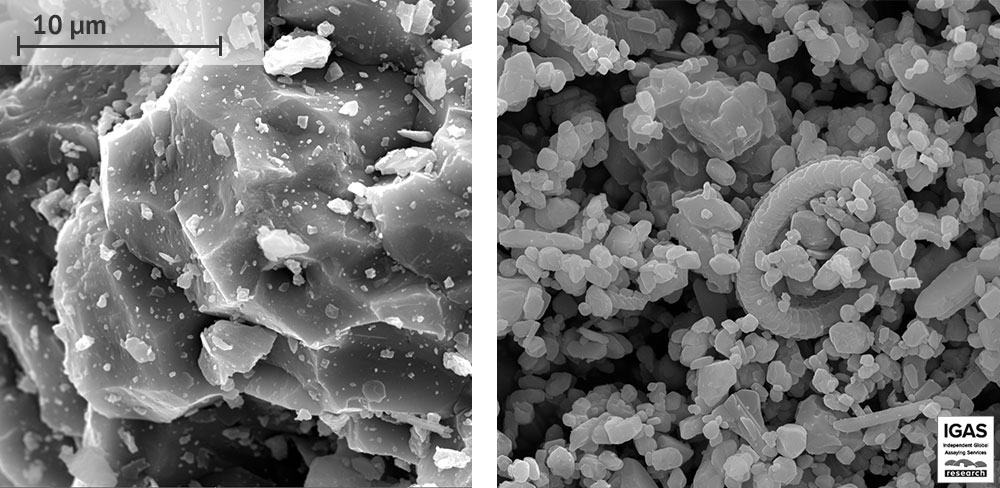
Left: Limestone Powder - Right: Rügen Chalk Slurry / SEM Image - IGAS research Goslar
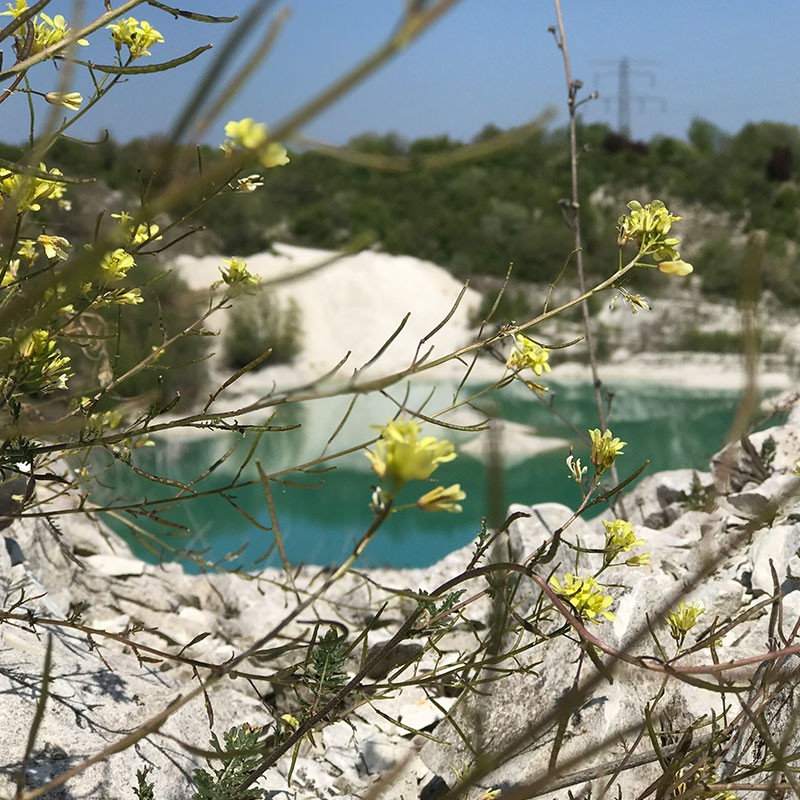
The Discovery and Development of Söhlde Chalk
Christoph Behrens was the man responsible for the economic development and prosperity of the village of Söhlde in Germany.
He was a farmer, innkeeper, and also worked as a glazier. While plowing above the village of Söhlde, he came across white, not very hard stones that piqued his interest. With these stones, he developed the Söhlde Chalk, which would later become known in Germany.
He scraped these stones with a blunt knife until he had a fine powder. He mixed this with linseed oil to make putty for glazing work.
At that time, the inn was connected to a customs station where all goods to be brought across the nearby border to Braunschweig had to be cleared through customs. As a result, many carters stopped at the inn and often waited long for the leisurely customs clearance. Sometimes entire wagon convoys halted in front of the courtyard.
While waiting for their clearance, the carters observed Behrens in his interesting activity and realized that the innkeeper was able to make the putty that was otherwise difficult to obtain. They took samples and were convinced of its quality and durability. Soon after, Behrens received more and more orders, but he found that he couldn't handle the required quantities with his current method anymore.
He manually crushed the stones with a hammer, which was very strenuous. In 1817, he established a stamp mill on his farm, powered by gears turned by a horse running in a circle. To further improve the quality, a slurry device was added.
In 1820, the operation was expanded again, and a post windmill was built outside the village on the north side of the Söhlde chalk ridge. Under favorable weather conditions, 20 hundredweight of chalk could be produced daily, leading to an annual turnover of about 1600 hundredweight.
Christoph Behrens passed away in 1830.
1857 saw a partial shift from the stamping process to grinding. The first roller mill in Söhlde consisted of thick millstones mounted vertically and rotating on a strong iron plate. This made the chalk much finer, but it still didn't meet the growing demands.
1863 marked the transition to wet grinding and the relocation of production sites near the village, with the type of mill changing from post windmill to tower mill (Holländermühle). This made the chalk powder even finer. The next step was the setup of drying sheds, where the chalk slurry was stored on large, porous chalk plates to absorb moisture.
1869 brought a change in the production method, with the roller mills operating underwater in a large tub. The chalk slurry was poured into the tub and directed to settling pits through channels, where it settled. The water was recycled and returned to the roller mills. After drying in the sun and wind, the slurry was dug out, loaded onto carts, and transported to the drying sheds.
Over the years, more chalk factories were established.
1906 quickly saw chalk manufacturers recognizing the advantages of electricity: With the construction of a power plant, all chalk factories, Söhlde, and most surrounding areas were supplied with electricity. The importance of windmills declined as a result.
The newer chalk factories were structured like factories, with the long drying sheds connected to the main building and the settling pits located within the complex. The technology was continuously modernized, often juxtaposing old and new. Due to the need to deliver increasingly better quality at the most favorable prices, rationalization was already carried out at that time to minimize manual labor whenever possible.
In 1955, high-speed grinding machines were used, where a disc with beaters reached about 3,000 revolutions per minute and crushed the raw material to give the chalk the fineness required for its purpose.
Today, the chalk rock is conveyed from the excavation wall to a storage hall with a capacity of approximately 10,000 tons using a mobile crushing and grinding plant through a conveyor belt that is about one kilometer long. The material is then picked up by a scraper and transported to the machine building via a conveyor belt, where drying drums, sieving machines, hammer mills, and sifters are located. A modern flat filter dust extraction system ensures clean exhaust air. The entire plant control is centralized through a control system (PSE).
Source: among others, Allgemeiner Heimat Kalender 1955 für Stadt und Land
Die Söhlder Kreide - Industrie von O. Dröge, Kleinhimstedt
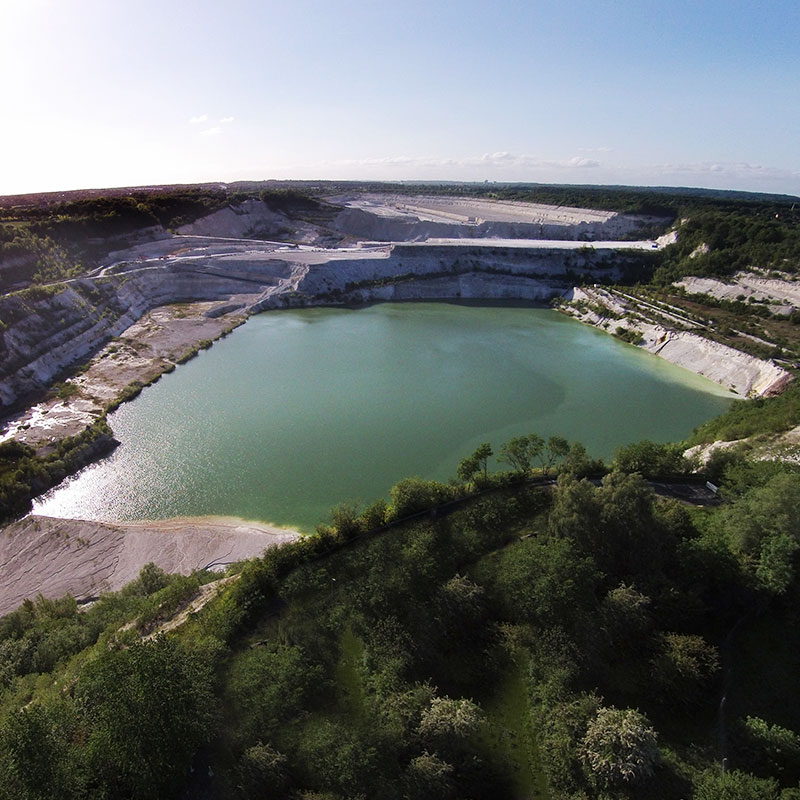
Geological Aspects of Lägerdorf Chalk:
Schleswig-Holstein is a relatively young region that was shaped by the ice age and post-glacial period. It would be seafloor like much of Northern Germany and nearly all of Denmark if not for the modern periods greatly increasing its build. However, the underlying foundation consists of solid rocks like Buntsandstein and Rotliegendes, which link the central German mountainous regions with the rocky caves of Scandinavia.
The Segeberg Gypsum Hill and the Heligoland Rock Island stand as witnesses to the underlying formation, as they rise above the younger deposits. In Elmshorn and Lägerdorf, the ancient mountains can be found just below the Earth's surface. Chalk is a significant component of the subsoil and holds special importance for Lägerdorf, as numerous fossils are found within the marine deposits. The Chalk Sea extended from the Baltic countries to the Atlantic and was about 300 km away from Lägerdorf. Similar chalk deposits are also found in Rügen, Hemmoor on the Oste River, Belgium, Champagne, and Dover.
The sea had subtropical conditions and was not deeper than 1,000 m. It possessed oceanic characteristics, as there were no clay-sandy washouts from surrounding continents that were characteristic of earlier seas. Most of the deposits consist of tiny calcium particles from marine organisms like ciliated single-celled organisms, single-celled root amoebas, calcified plankton algae, and calcium flakes from marine bacteria, rather than larger fragments of organisms.
Over millions of years, chalk was deposited into thick layers, often taking a full millennium to form a sediment layer of 1-2 cm. Assuming an average sedimentation rate of 2 cm per millennium, the 400 m of chalk, comprising various profile sections for the open-pit mines in Lägerdorf and Kronsmoor, was deposited over approximately 20 million years. Modern physical age determinations have also confirmed this timeframe.
The water temperature of the Chalk Sea remained constant at 18-20 degrees Celsius. During the prolonged deposition period, marine life underwent various stages of development. The key index fossils are the remains of prehistoric squids, particularly the calcareous shells of their mantles, which are traceable in the chalk of Lägerdorf. These shells are characterized by the shape of their conical pit and apex and belong to the youngest formation of the upper chalk, the Senonian.
Sea urchins are frequently found in the Lägerdorf chalk, often filled with chalk, sometimes silicified. They vary in shape and size, from heart-shaped to spherical and halved ellipsoid. There are different developmental stages of similar sea urchins, with symmetrically and asymmetrically distributed body openings. Shells of mollusks and sea urchins are often preserved only in fragments. Skeletal parts of dinosaurs from the Jurassic period are said to have been found in Lägerdorf as well. The Chalk Sea also hosted siliceous sponges and other organisms with siliceous skeletons, traces of which are still visible. However, the silicate framework was replaced by brown iron ore, which has been deposited and enriched over long periods in the form of gel.
By draining the gel, flintstones are believed to have formed, which occur in so-called flintstone banks during chalk mining in Lägerdorf. These banks enable a clear division of the chalk layers. Compared to other deposits, the chalk in Lägerdorf is not particularly rich in flintstones or fossils, making it a particularly high-quality raw material. The CaCO3 content is about 96-98%. The chalk deposit is connected to the chalk mountain range lying beneath all of Schleswig-Holstein.
In Lägerdorf, there is a shallow vault that surfaced during the middle Tertiary period due to the uplift of a salt dome from great depths. It is intersected by fragments, polished by the inland ice, and covered by a thin layer of moraine. The chalk profile has a thickness of about 250 m, as evidenced by boreholes up to 200 m deep. However, a 4% salt solution has been detected, confirming the presence of the salt dome beneath the chalk. The overburden layer above the chalk varies between 3 and 10 m in Lägerdorf, and the area suitable for extraction covers approximately 10 square kilometers. to absorb moisture.
The chalk formation exhibits considerable variability in depth across our district and the rest of the region. To the west of Krempe, it is around 30-40 m thick, while near Büttel, it reaches up to 350 m, and even exceeds 800 m below sea level in Hamburg. At Heide, where the chalk formation is also shallow, a deep drilling of 1,600 m revealed a massive salt layer located 504 m beneath the chalk formation.
Modern-era deposits differ significantly from those of the chalk era. They primarily consist of marls, clays, gravels, and sands, generally being soft and loose, except for some older Tertiary deposits. Holstein rock, which formed in the early Tertiary and is also found in Itzehoe, is a sandy shell rock containing numerous glacial erratics in clay and sand pits. It is sand cemented by iron carbonate, containing an abundance of well-preserved marine clams and snails. The formation also contains deposits of glauconite clay, originating from former tidal flat formations.
Our region was shaped during the Diluvium period by several glaciation and deglaciation phases, significantly influencing its current surface features. The first two glaciations covered the Steinburg district, while the next one formed the end moraines near Itzehoe. The most recent ice age only reached central Holstein, where its meltwater split the hilly moraine landscape and formed the basic network of water bodies. The Urstör, a major stream of meltwater, carved the present-day Stör riverbed, separating the Münsterdorf Geest Island from the high ridges north of the Stör valley.
Our region was shaped during the Diluvium period, experiencing several glaciation and deglaciation phases. The first two glaciations covered the Steinburg district, while the subsequent one formed the end moraines near Itzehoe. The last ice age only reached central Holstein, where its meltwater divided the hilly moraine landscape and shaped the water network in its essential features. The Urstör, a large stream of meltwater, excavated the current Stör riverbed, separating the Münsterdorf Geest Island from the high ridges north of the Stör valley, and creating the steep slopes near Itzehoe and Kellinghusen. The Münsterdorf Geest Island is approximately 8 km long, 3.5 km wide, and rises to moderate heights. It is bordered to the east by the Breitenburg and Rethwisch moors, to the south by the Rethwisch and Neuenbrook marshes, and to the west by the Kremper marsh, which, together with the Münsterdorf Stör marsh, forms the northern boundary.
The Münsterdorf Geest Island became recognizable as the original island during the great storm flood of 1962, when the waves hit the old shoreline on the outskirts of Münsterdorf after the Stör dike broke. The white North Frisian dunes still evoke memories of the former coastline. Over time, the North Sea was able to gradually advance to the edges of the Geest as the land slowly sank. At the end of the last ice age, the land was still 20-60 m higher than it is today. However, the changes between land and sea in our region occurred over long periods that are scarcely measurable for humans. Therefore, today, we can only glimpse a fragment of this evolution.
Schleswig-Holstein does not have known geological formations from the Earth's early or primal eras, although they might exist at great depths and occasionally surface in erratics from Northern Europe.
Source: Lägerdorfer Chronik II
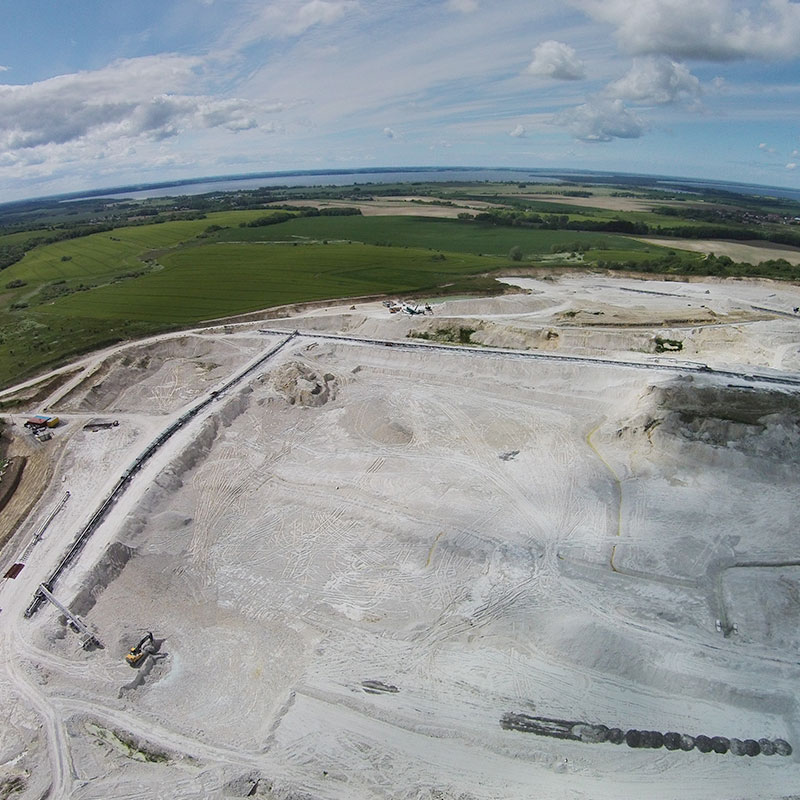
The History of Rügen Chalk
Extensive chalk deposits are located in the northeastern part of Rügen Island, specifically on the Jasmund Peninsula.
Chalk itself is a natural, fine-grained, white Calcium carbonate that formed in the sea through the deposition of shell remains from prehistoric animals known as foraminifera and coccoliths. These microorganisms lived in the sea that covered all of Northern Europe between the Jurassic and Tertiary periods millions of years ago. The sedimented fragments of the thin-shelled calcareous shells formed the solidified Calcium carbonate chalk, which is visible as the Jasmund Chalk Coast to everyone.
Rügen chalk represents Maastrichtian chalk, characterized by its fine grain structure and high Calcium carbonate content of at least 97%. The Calcium carbonate consists of typical calcite crystallites, whose shape is attributed to their former organic origin. These crystallites, ranging from 0.3 to about 3 µm in grain size, are mostly isometrically shaped and form micro-porous aggregates.
The chalk industry on Rügen, involving quarrying, slaking, drying, and pulverizing, can trace its tradition back to quite a long time ago. The foundation of the Rügen chalk industry was laid through extensive chalk research in the first half of the 19th century by Friedrich von Hagenow, born in Langenfeld near Loitz in 1797. In 1832, he acquired exclusive rights to the chalk quarries in Stubnitz. Since then, chalk has been extracted through open-pit mining and separated from unwanted impurities such as flintstones, colloquially known as "Feuersteine," and coarse components known as "Grand," through slaking. This technology may sound relatively simple, but at that time, it was physically demanding work that could only be carried out during the appropriate season. An industrial usage, as we know it today, did not exist back then. People didn't know quite what to do with the natural product chalk.
"While it was good for whitewashing, it wasn't adhesive enough for masonry."
Quote by Johann Jacob Grümke. And this man already noted back then:
"It would have been beneficial for the residents if nature had chosen to create rock masses instead of chalk, which could have been used in quarries."
Certainly, notable quantities were produced and sold in the mid-19th century according to the standards of that time. However, from today's perspective, these quantities may not be particularly interesting. The center of slaked chalk production became Sassnitz due to its favorable extraction possibilities. The technology itself was associated with significant physical labor. The raw material had to be chiseled off steep rock walls by hired laborers using pickaxes and transported to mixing plants on carts. There, in large tubs, rough flint material was separated by adding water and stirring with iron hooks. The chalk, slaked in water, flowed as "Kreidemilch" (chalk milk), also known as "Kreidetrübe," through settling channels, where finer impurities settled on the channel bottoms, into settling ponds. Here, the purified "Kreidetrübe" settled in a layer of about 30 cm. After clearing the water, it was refilled until the chalk reached a thickness of nearly 1.5 meters. To expedite the solidification of the deposited chalk, it was tamped or compacted.
The next step involved removing the deposited material, which still had a moisture content of 30 - 35%. This meant that the heavy, thick paste was shoveled out of the ponds into carts. Workers then transported these carts to drying sheds and spread the paste, shaped into shovel-sized pieces, on the lower rows. The shaped pieces had to be reshuffled several times to dry to a residual moisture content of about 5% during a storage period of approximately 4 weeks. At that point, the chalk was ready for shipping.
Much larger quantities of raw chalk were extracted and sold with the emergence of the chalk industry in the early 20th century. The focus of this production was specifically on the Jasmund quarries, with about a dozen excavators already operational before 1945. By that time, the oldest quarries on the eastern shore of Jasmund and near Lohme, as well as the quarries of Dumsevitz, Rosengarten, and Altkamp on southern Rügen, were no longer in operation.
The raw material from the Jasmund quarries was transported via a chalk railway to Martinshafen or with an aerial tramway to Sassnitz Harbor for shipping. Both harbors had already transshipped significant quantities of raw chalk by 1928. Considerable amounts were also shipped from Klein Stubben. The major recipients were the Portland cement factories in the Oder estuary area. Slaked chalk itself was only produced incidentally before 1945. It was mainly transported by train to Berlin, Bremen, Hamburg, the Ruhr area, and to Breslau and Stettin.
In 1928, around 500,000 tons of raw chalk were loaded from the Jasmund quarries in Martinshafen and Sassnitz. Slaked chalk production, on the other hand, was only approximately 80,000 tons for shipping. And this quantity was generated almost entirely by manual labor. The end of World War II temporarily halted the chalk industry. However, the economy could not do without this valuable material, so a total of 19 chalk factories operated on Rügen after 1945. In 1946, the Stettiner Portlandzementfabrik (Lancken branch) and Stettiner Portlandzementfabrik (Kalk- und Kreidewerk Sassnitz) were transferred to the state-owned Kreidewerk of the Mecklenburg region. In 1948, the Pommerscher Industrieverein factories (Sagard and Wittenfelde) were merged into the state-owned Volkseigene Kreidewerke Rügen. In 1949, the "Landeseigene Kreidewerk Land Mecklenburg" and the leased operation Buddenhagen were integrated into Volkseigene Kreidewerke Rügen. Additionally, the community chalk factory Küster Sassnitz was added in 1951. In 1954, 7 more individual factories were assigned to the state-owned enterprise, and in 1957, the formation of the VEB Vereinigte Kreidewerke Rügen was completed with the integration of Kreidewerk Garz, Sassnitz, and Kreidewerke Funk & Radvan in Gummanz. With increasing industrialization, the applications of chalk also expanded significantly. However, the chalk as it was offered at that time was no longer suitable for these demands. Therefore, a technology had to be developed and established that ensured chalk with residual moisture of about 0.5% and a fineness with an upper limit of 63 µm. The production expectations at that time were about 125,000 annual tons. To realize this industrial necessity, a new chalk factory was designed and built. In 1962, the trial operation began in the state-owned enterprise Kreidewerke Rügen, using highly modern, fully mechanized technology. The time required from extraction to packaging of the dried material was limited to about 80 minutes. The strenuous manual labor in the quarry was replaced by modern equipment at the time, such as the excavator UB 80; transportation was also carried out on tracks, just like the overburden transport.
The chalk cars and excavators became larger (UB 162-1), and experimental use of 20 m³ cars from lignite mining were introduced in the overburden transport after adapting the tracks accordingly.
Depending on the ground conditions, heavy trucks took over the overburden transport, and specialized excavators were used for laying the track segments. Despite fluctuations in production results each year, mainly influenced by changing weather conditions, impressive performance levels of 185,000 annual tons of slaked chalk and 55,000 tons of "Grand" for industry and agriculture were achieved by the standards of that time. The assignment of Kreidewerk Rügen to higher institutions was also quite changeable. We were part of the Council of the Rostock district for a while, then part of the Association of State-Owned Enterprises for Building Materials Halle, and later part of VVB Zement Dessau, which was then renamed to the state-owned enterprise Zementkombinat Dessau. In 1984, the legal autonomy of the company was abolished. Kreidewerk Rügen was assigned as Division 6 to the state-owned enterprise Zementwerke Rüderdorf.
Although the production-related advancement in the chalk factory did not progress as quickly and comprehensively as the administrative aspect, it brought innovations, such as the system of combined chalk extraction and pre-processing known as the "mobile slaking device" (or colloquially known as "The Drum"). The mobile slaking device evolved into a stationary system through various stages. Raw chalk was "delivered" again.
The fall of the Berlin Wall (Wende) was indeed a significant turning point for the chalk factory. With the sale of the Rüdersdorf cement factory to the Readymix Group, the chalk factory was spun off and continued as a trustee operation. The first excavator started raw chalk extraction in the open-pit mine Wittenfelde, and overburden extraction with mobile excavators and rail transport were discontinued. On August 13, 1993, the privatization into Kreidewerk Rügen GmbH took place, within the business association of Vereinigte Kreidewerke Dammann. This laid the foundation for extensive investments totaling around 40 million DM (approximately 20 million €) for the present. A state-of-the-art facility for chalk production from extraction to loading was established. The raw chalk, extracted using another excavator, now from the Promoisel open-pit mine with approximately 25 million tons of available raw chalk, is transported through a 2 km long conveyor belt to the factory. There, using our new wet processing technology, it is processed into the well-known product Rügener Schlämmkreide (Rügen slaked chalk) in various fineness grades. Accordingly, its applications are quite diverse.

Chalk distribution with expert advice –
Experience and knowledge make the difference.
